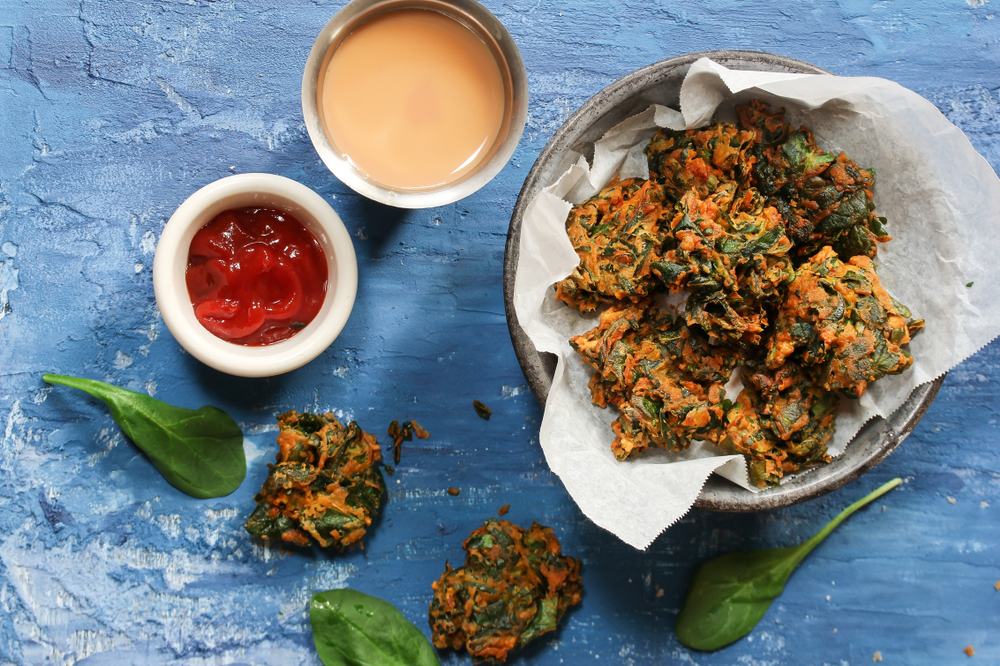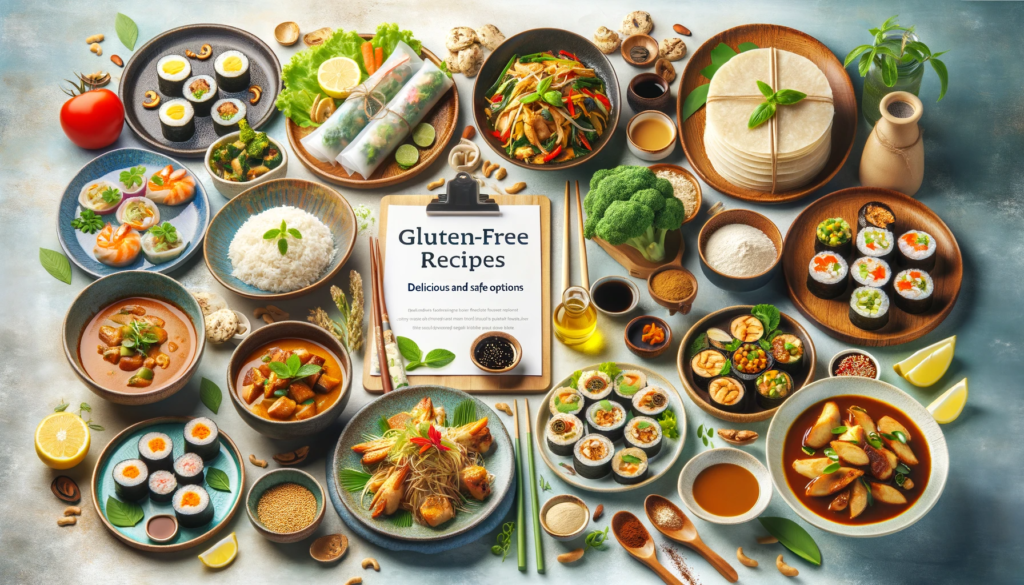Gluten-Free Asian Recipes: Delicious and Safe Options
Understanding Gluten-Free Asian Cuisine
Gluten, a protein found in wheat, barley, and rye, has been an integral part of many Asian dishes due to its viscoelastic properties, giving certain foods their texture and chewiness. However, this innocuous protein can wreak havoc for those with celiac disease or gluten sensitivity, leading to a host of adverse reactions upon ingestion. As a result, many seek out gluten-free alternatives to enjoy traditional flavors without the associated health risks.
Asian cuisine is known for its variety and flavor, which often comes from ingredients like soy sauce, noodles, and wheat-based sauces, all common sources of gluten. For those looking to maintain a gluten-free diet, being vigilant about these ingredients is key. An increased awareness has led to the availability of gluten-free alternatives in Asia, helping people enjoy their cuisine without compromising on health or taste.
With health consciousness on the rise, Asia experiences a growing trend towards gluten-free eating. A surge in gluten-free offerings in supermarkets and restaurants across the continent is evident, reflecting a societal shift towards embracing dietary restrictions and acknowledging diverse health needs. The proliferation of gluten-free products has made it easier for those with gluten intolerance to indulge in Asian cuisine without concern.
Identifying gluten-free Asian ingredients requires a keen eye for labels and an understanding of the hidden sources of gluten. While some items like rice and buckwheat are naturally gluten-free, cross-contamination and additives can present pitfalls. It’s vital to look for certified gluten-free labels or turn to trusted sources and brands known for their rigorous avoidance of gluten in the production process.
Essential Gluten-Free Ingredients for Asian Cooking
A staple in Asian cuisine, soy sauce can be replaced with tamari, a Japanese variant typically free from gluten, or liquid aminos, which offer a similar umami flavor. These alternatives can be used in marinades, sauces, and as a table-side condiment, enriching dishes with their rich, savory nature without worrying about gluten exposure.
The joy of slurping noodles doesn’t have to end with a gluten-free diet. Various gluten-free noodle varieties, including rice noodles, mung bean threads, and shirataki noodles, provide alternatives to traditional wheat-based offerings. Their versatility makes them excellent for incorporating into anything from soups to stir-fries, securing their place in a gluten-free Asian pantry.
Gluten-free flours like rice flour, tapioca flour, and coconut flour have become staple ingredients in Asian cooking for those avoiding gluten. These flours can be used in various ways, from thickening sauces to making gluten-free pastries. Their unique properties can be harnessed to replicate the textures traditionally achieved with wheat flour.
Many spice mixtures and condiments in Asian cooking are naturally gluten-free, providing flavors that elevate dishes without relying on wheat-based ingredients. Pure spices, sesame oil, fish sauce, and rice vinegar are all examples of condiments that offer intense flavor without gluten. Understanding which mixtures and alternatives to use is essential for successful gluten-free Asian cooking.

Starter Recipes for a Gluten-Free Asian Feast
Choosing the Right Gluten-Free Dough for Dumplings
Creating gluten-free Asian dumplings starts with selecting the correct dough. While traditional dumplings use wheat-based wrappers, gluten-free alternatives include doughs made from rice flour, potato starch, or gluten-free flour. The key is to find a combination that mimics the elasticity and texture of regular dough, allowing for pleating and folding without breaking.
Gluten-Free Fillings: A World of Flavor
Gluten-free dumpling fillings can be a rich tapestry of flavors, utilizing various ingredients from ground meats to finely chopped vegetables. Aromatic herbs, spices, and gluten-free sauces like tamari can be used to season fillings, ensuring they’re both flavorful and safe for those avoiding gluten. The key is to pack these fillings with flavor, as the gluten-free dough tends to be more neutral.
Fresh Ingredients for Gluten-Free Spring Rolls
Fresh, crisp vegetables, tender proteins, and aromatic herbs are the building blocks of gluten-free spring rolls. Opting for ingredients like carrots, cucumbers, lettuce, and cilantro, combined with shrimp, chicken, or tofu, allows for a colorful and healthy filling. Ensuring fresh ingredients also means the flavors and textures will be at their best when wrapped in gluten-free rice paper.
Making the Perfect Gluten-Free Rice Paper Wrapper
Rice paper is inherently gluten-free and the perfect vehicle for spring rolls. The trick to creating the ideal wrapper is to soften it just enough to be pliable without it becoming too sticky. Dipping rice paper into warm water for a few seconds and laying it out on a damp cloth can create the ideal texture for rolling up the fresh and flavorful fillings that characterize gluten-free spring rolls.
Balancing Flavors in Gluten-Free Asian Salads
Gluten-free Asian salads are a delicate balance of sweet, salty, sour, and spicy. Ingredients like lime juice, fish sauce, gluten-free soy sauce, and honey can create a harmonious dressing that complements the variety of textures in the salad from crisp vegetables to soft noodles to crunchy nuts. The goal is to achieve a fresh and vibrant dish that invigorates the palate while adhering to gluten-free standards.

Main Course Favorites Made Gluten-Free
Crafting a Delicious Gluten-Free Teriyaki Sauce
Creating a succulent Gluten-Free Teriyaki Chicken starts with a perfect homemade teriyaki sauce adjusted for gluten sensitivities. Typically, teriyaki sauce contains soy sauce loaded with gluten, but swapping this with a gluten-free version or alternatives like tamari and coconut aminos retains the distinct flavor sans gluten. Combine this with honey for sweetness, garlic and ginger for pungency, and a starch like arrowroot to thicken, and you get a glossy, rich sauce that can be generously brushed on grilled or baked chicken to create a Japanese classic that everyone can enjoy.
Selecting Gluten-Free Curry Paste
Thai Green Curry, renowned for its aromatic and spicy flavors, can remain a menu staple even for those on a strict gluten-free diet by selecting the right curry paste. While traditional curry pastes may include gluten-containing soy sauce or additives, numerous brands offer gluten-free alternatives. Seeking out these alternatives is crucial; always read labels diligently to ensure the paste contains only naturally gluten-free ingredients. This will allow you to capture the essence of Thai cuisine without compromising dietary restrictions.
Vegetables and Proteins for Green Curry
Thai Green Curry thrives on its mix of textures and flavors provided by a variety of vegetables and proteins. For a gluten-free version, you can use an array of vegetables like bell peppers, zucchini, bamboo shoots, and eggplant. Adding proteins such as chicken, beef, tofu, or shrimp marinated with gluten-free sauces makes the curry hearty and satisfying. The key is to cook the vegetables until just tender, maintaining their vibrant colors and crisp textures to contrast the creamy coconut milk-based curry.
Preparing Gluten-Free Gochujang Sauce
Korean Bibimbap is often served with a spicy, savory gochujang sauce that typically contains gluten. However, gluten-free gochujang varieties are available, making it possible to enjoy this sauce’s unique heat and depth of flavor. When preparing Bibimbap, mix the gluten-free gochujang with ingredients like sesame oil, vinegar, and sweeteners to taste. Achieving the right balance of flavors is essential for this dish’s success, as the sauce unites the diverse ingredients in the Bibimbap bowl.
Assembling Your Gluten-Free Bibimbap Bowl
Constructing a Gluten-Free Bibimbap Bowl begins with a base of warm, fluffy rice that’s naturally gluten-free. Add a colorful arrangement of seasoned vegetables like spinach, mushrooms, zucchini, and carrots, alongside a protein such as bulgogi beef, chicken, or tofu, which should be marinated in a gluten-free sauce. The final flourish is a sunny-side-up egg and a dollop of gluten-free gochujang sauce, turning the individual components into a harmonious, nutritious, and gluten-free Korean dish that’s both comforting and versatile.
Creating Gluten-Free Asian Desserts
Choosing the Right Sweet Rice Flour for Mochi
The journey to delightful Gluten-Free Mochi begins with selecting the right sweet rice flour, also known as glutinous rice flour, which is ironically gluten-free. This flour is the cornerstone for mochi, and its unique starch composition imparts the chewy, sticky texture that mochi is famous for. To ensure a successful dessert, look for high-quality sweet rice flour brands or those specifically labeled for making mochi. This will ensure the right consistency and texture, showcasing mochi’s signature mouthfeel, without any gluten in sight.
Creative Fillings for Gluten-Free Mochi
Stepping beyond tradition, Gluten-Free Mochi can be filled with a creative array of sweet concoctions. While the usual azuki bean paste is a classic choice, experimenting with fillings like nut butters, chopped fruits, or even chocolate can invigorate this traditional dessert with new life. Ensuring fillings are gluten-free too, you can offer a modern twist on mochi that will excite both traditionalists and culinary adventurers. The emphasis should always on sourcing gluten-free ingredients to guarantee the integrity of this delightful sweet treat.
Almond Flour and Its Role in Gluten-Free Baking
Almond flour emerges as a hero in Gluten-Free Asian-inspired cakes and pastries. Rich in proteins and naturally gluten-free, this versatile flour can replace wheat flour in recipes, offering a slightly nutty flavor and a tender crumb. Diligently measured almond flour can be the base for a variety of baked goods, from fluffy cakes to crumbly cookies, ensuring that desserts don’t just mimic their gluten-containing counterparts but stand out with their unique, delightful taste and texture.
Gluten-Free Asian Fruit Desserts to Impress
Impressive Gluten-Free Asian Fruit Desserts can be celebrated in the final course of any meal. Utilizing the natural sweetness of local fruits, like lychee, mango, or persimmon, in combination with gluten-free grains and natural thickeners, these desserts offer a refreshing and vibrant end to the dining experience. Crafting gelatinous puddings with agar-agar, baking fruit-filled pastries with gluten-free dough, or creating compotes to top ice creams, there’s a world of opportunity to impress guests with the rich fruit-based dessert traditions of Asia without including any gluten.
